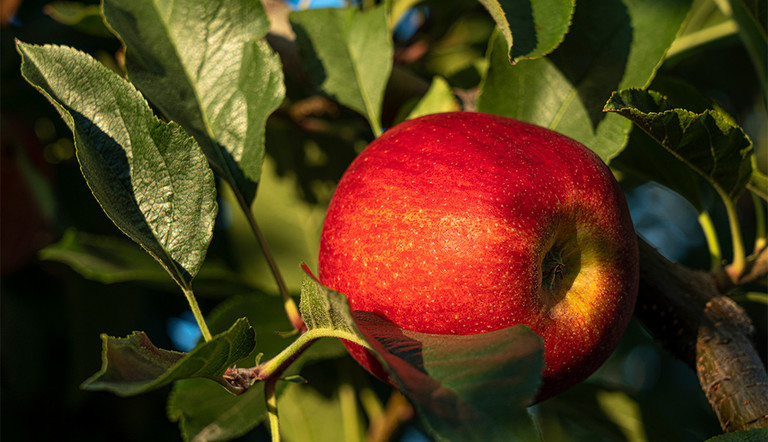
MERPAN® bull’s eye rot and European canker protection benefit apple exports

The reduction of PHI (pre-harvest intervals) to just three days for Merpan (captan) against bull’s eye rot and European canker has provided a shot in the arm for apple exports. No more so than in exports to China, a growing market for New Zealand.
ADAMA New Zealand’s National Sales Manager Lester Deighton says the proven multi-site fungicide is doing much to protect high value, export apple varieties including Pacific Queen, Pink Lady and Ambrosia. All of which are particularly vulnerable to the menace of bull’s eye rot.
Bull’s eye rot had been a potential Achilles’s heel for the industry; possibly causing post-harvest losses and threatening this country’s reputation for quality.
More effective treatment for apples
Fruit becomes more susceptible to bull’s eye rot late in the season, with rots not visible at picking but expressed during storage. This has posed real challenges for orchards where apples were successively picked for several weeks at approximately weekly intervals. Previously, most product PHIs effectively prevented application between picks to protect later-harvested fruit.
Lester says when 14 days was a PHI standard, export fruit quality and even entire markets were put at risk. “China has its own significant apple industry and no bull’s eye rot. That makes them highly motivated to stop bull’s eye rot before it reaches their borders.”
To meet stringent import requirements, an application of Merpan within the last 20 +/-5 days before harvest was a requirement for apples imported from New Zealand. The reduced PHI of three days for Merpan enables growers to treat fruit more effectively while still meeting export standards.
Robust tool against European canker
Described by some growers as the number one threat to their business, European canker, is also controlled by Merpan. Not only is European canker a quarantine pest for Australia, China and Taiwan, it also reduces productivity and can result in tree death in severe cases.
European canker infection may occur at any time during the year, but harvest, leaf fall and winter pruning have been identified as critical infection periods where the fungus can enter host trees through exposed wound sites such as pedicel and leaf scars. Prevalence and severity increase in high rainfall seasons as spores are dispersed by rainfall.
Lester says while European canker has been present in New Zealand for decades, it has become more prevalent due to changes in orchard management, including increased planting densities and changing varieties.
“With European canker on the Merpan label growers now have an effective tool to manage the disease. What is more, with the PHI reduced to three days, the risk of infection associated with picking scars can be significantly reduced.”
Previously, the only products with label claims for European canker were copper based products such as copper oxide, copper oxychloride and Bordeaux mixture, and these may only be used post-harvest due to the risk of phytotoxicity.
Find out more on how to effectively manage bull’s eye rot and European canker with Merpan.